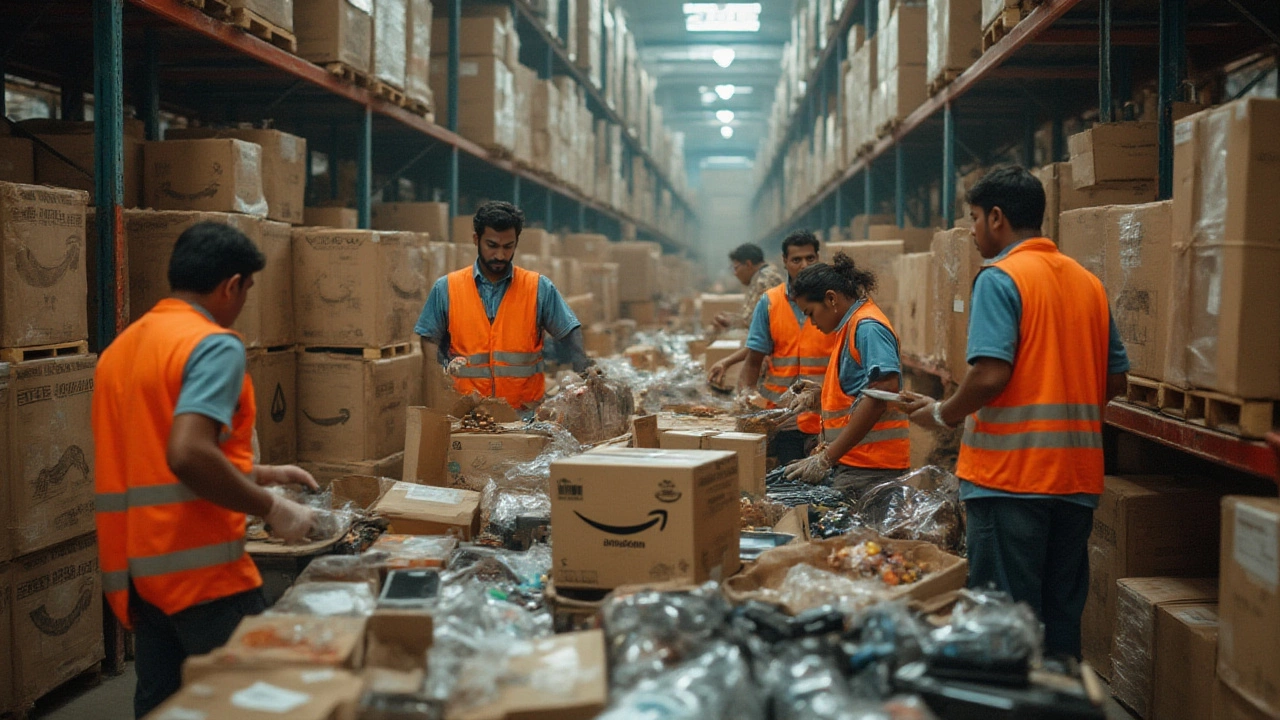Are Amazon Pallets Real? The Truth Behind Amazon Return Pallets
Uncover if Amazon pallets really exist, how Amazon returns are sold, and the surprising facts behind these mysterious liquidation deals. Learn how and where to buy them.
If you’ve ever seen a big wooden box with an Amazon logo, you might wonder – is it legit? The short answer is yes, Amazon does use real pallets for many of its shipments. But the market is also full of fake listings and scams that try to sell you something that isn’t actually tied to Amazon.
Understanding the difference can save you time, money, and headaches. In this guide we’ll break down how Amazon uses pallets, what a real Amazon pallet looks like, and how to spot a fake.
Amazon moves millions of items every day, and pallets are the most efficient way to handle bulk orders. A standard Amazon pallet is usually a 48" x 40" wooden platform that can hold up to 1,500 pounds of product. The pallets are pre‑labeled with a barcode, a shipment ID, and sometimes a QR code that links to Amazon’s tracking system.
When a seller ships to an Amazon fulfillment center, they often use Amazon‑branded pallets to speed up receiving. Amazon’s warehouse staff scans the barcode, and the system automatically updates inventory. This process reduces manual entry errors and speeds up order processing.
For third‑party logistics providers (3PLs) that work with Amazon, using Amazon‑approved pallets is a requirement. The pallets must meet size, strength, and labeling standards set by Amazon’s logistics team.
Real Amazon pallets have a few tell‑tale signs. First, the barcode on the top edge will start with the letters “AP” followed by a series of numbers. Second, the wood is typically new or in excellent condition – Amazon doesn’t reuse damaged pallets. Third, the label includes a clear “Amazon” logo and a “Ship To” address that matches an Amazon fulfillment center.
If a seller offers a pallet that looks worn, has missing labels, or uses a generic barcode, it’s probably not an Amazon pallet. Scammers often post low‑price “Amazon pallets” that are actually standard wooden pallets with a sticker slapped on.
One practical tip: ask for a clear photo of the pallet’s barcode and logo before you buy. Compare it to images on Amazon’s supplier portal or ask the seller for the pallet’s SKU number. If they can’t provide details, walk away.Another red flag is when a listing promises a massive discount for bulk pallets but doesn’t explain how the pallets will be used. Real Amazon pallets are part of a controlled supply chain, so they don’t get sold on public marketplaces in large quantities.
Finally, check the seller’s reviews. A reputable 3PL or logistics company will have feedback from other Amazon sellers. Fake sellers usually have little or no history.
In short, Amazon pallets are real, but the market is noisy. By looking for proper labeling, clean wood, and credible sellers, you can avoid buying a fake.
Whether you’re a small seller trying to ship to an Amazon warehouse or a logistics pro handling large shipments, knowing these basics will keep your supply chain smooth and your costs under control.

Uncover if Amazon pallets really exist, how Amazon returns are sold, and the surprising facts behind these mysterious liquidation deals. Learn how and where to buy them.